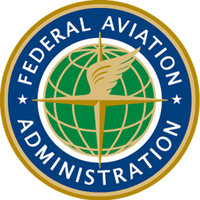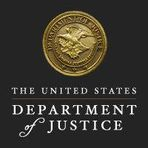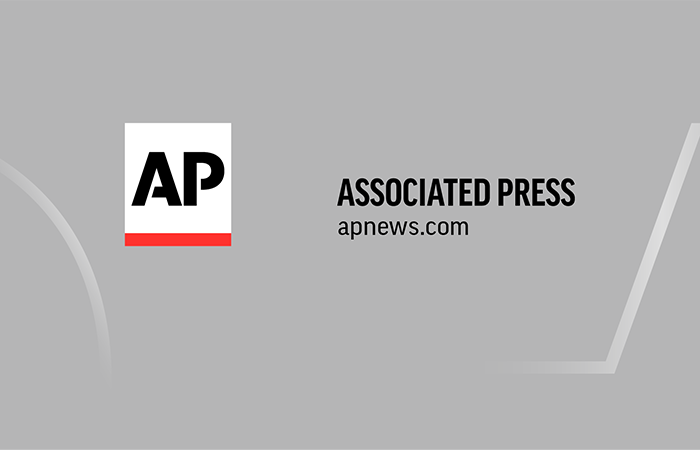The Dual Dangers: Musk's Shifting Focus and the Drone Dilemma
April 23, 2025, 3:50 pm

Location: United States, District of Columbia, Washington
Employees: 10001+
Founded date: 1958

Location: United States, District of Columbia, Washington
Employees: 10001+
Founded date: 1789
Total raised: $6.5M
In the world of business and technology, two stories are unfolding that highlight the precarious balance between innovation and safety. One revolves around Elon Musk, the enigmatic CEO of Tesla, who is shifting his focus from cryptocurrency to corporate recovery. The other concerns the rising threat of drones near major U.S. airports, a danger that could have catastrophic consequences. Both narratives reveal the fragility of progress and the unforeseen challenges that accompany it.
Elon Musk is a master of reinvention. He’s a visionary, a disruptor, and now, a government employee. His recent announcement during Tesla’s earnings call sent ripples through the tech and financial worlds. Musk declared he would significantly reduce his involvement with DOGE, the cryptocurrency he championed, starting in May. This decision comes at a time when Tesla’s stock has plummeted over 40% this year, a stark reminder that even titans can falter.
Tesla’s latest earnings report was a wake-up call. The company missed expectations, with a 20% drop in automotive revenue and a staggering 71% plunge in net income. Musk’s foray into government, specifically his role in President Trump’s Department of Government Efficiency (DOGE), was initially seen as a bold move. However, it now appears to be a distraction at a critical juncture for Tesla. The company faces fierce competition, particularly from China, and an aging fleet of electric vehicles.
Musk’s commitment to DOGE was not just about cutting government waste; it was also about political ambition. He invested nearly $300 million in the 2024 campaign to help Trump reclaim the White House. But as Tesla’s fortunes wane, Musk’s focus must shift back to his core business. He mentioned he would still dedicate a day or two each week to government issues, but the question remains: can he juggle both roles effectively?
The challenges for Tesla are compounded by external pressures. Protests in the U.S. and Europe have marred the brand’s image, fueled by Musk’s controversial political affiliations. His claims about organized protests being funded by “fraudulent money” lack evidence and only serve to deepen the divide between him and the public.
Meanwhile, the impact of DOGE’s cuts to federal agencies raises eyebrows. Oversight bodies like the SEC and FAA have seen staffing reductions, leading to concerns about regulatory effectiveness. The White House has designated Musk as a “special government employee,” a title that raises questions about conflicts of interest. As he navigates this dual role, the stakes are high for both Tesla and the government.
In a parallel narrative, the aviation industry grapples with a different kind of threat: drones. The proliferation of quadcopters and remote-controlled aircraft has created a new layer of risk for passenger jets, especially near major airports. The FAA estimates that over a million drones are now in operation across the U.S., and the potential for disaster is growing.
The recent collision between a military helicopter and a commercial jet near Washington, D.C., which resulted in 67 fatalities, underscores the urgency of addressing this issue. Drones are now a significant concern, as their flight paths often overlap with those of commercial aircraft. The FAA has implemented regulations to mitigate risks, but enforcement remains a challenge. Recreational users often fly without knowledge of restricted airspace, creating a dangerous game of chance.
Experts warn that the FAA must take more aggressive action. Suggestions include implementing a system akin to speed cameras for drones, capturing transponder codes and issuing fines to violators. Additionally, manufacturers should be required to incorporate geofencing technology, preventing drones from entering sensitive areas. However, recent decisions by leading drone manufacturers to eliminate mandatory geofencing raise alarms. Without government mandates, the risk of drone-related incidents will only increase.
The consequences of reckless drone operation are already evident. Recent incidents, such as a drone colliding with a firefighting plane in Southern California, highlight the potential for disaster. The operator of that drone faced federal charges, but the broader issue remains: how to effectively regulate and monitor drone usage in a rapidly evolving landscape.
As Musk shifts his focus back to Tesla, the company must navigate a turbulent market while dealing with the fallout from its CEO’s political entanglements. Simultaneously, the aviation industry must confront the growing threat of drones, which could lead to catastrophic accidents if left unchecked.
Both stories serve as cautionary tales. They remind us that innovation comes with risks. Musk’s ambitions in government may have started with noble intentions, but the reality is that his focus must return to Tesla’s core mission. Meanwhile, the rise of drones presents a challenge that requires immediate attention.
In the end, progress is a double-edged sword. It can propel us forward, but it can also lead us into uncharted waters. As we navigate these complexities, the need for vigilance and accountability has never been more critical. The future is bright, but it’s also fraught with peril. The question is: are we prepared to face it?
Elon Musk is a master of reinvention. He’s a visionary, a disruptor, and now, a government employee. His recent announcement during Tesla’s earnings call sent ripples through the tech and financial worlds. Musk declared he would significantly reduce his involvement with DOGE, the cryptocurrency he championed, starting in May. This decision comes at a time when Tesla’s stock has plummeted over 40% this year, a stark reminder that even titans can falter.
Tesla’s latest earnings report was a wake-up call. The company missed expectations, with a 20% drop in automotive revenue and a staggering 71% plunge in net income. Musk’s foray into government, specifically his role in President Trump’s Department of Government Efficiency (DOGE), was initially seen as a bold move. However, it now appears to be a distraction at a critical juncture for Tesla. The company faces fierce competition, particularly from China, and an aging fleet of electric vehicles.
Musk’s commitment to DOGE was not just about cutting government waste; it was also about political ambition. He invested nearly $300 million in the 2024 campaign to help Trump reclaim the White House. But as Tesla’s fortunes wane, Musk’s focus must shift back to his core business. He mentioned he would still dedicate a day or two each week to government issues, but the question remains: can he juggle both roles effectively?
The challenges for Tesla are compounded by external pressures. Protests in the U.S. and Europe have marred the brand’s image, fueled by Musk’s controversial political affiliations. His claims about organized protests being funded by “fraudulent money” lack evidence and only serve to deepen the divide between him and the public.
Meanwhile, the impact of DOGE’s cuts to federal agencies raises eyebrows. Oversight bodies like the SEC and FAA have seen staffing reductions, leading to concerns about regulatory effectiveness. The White House has designated Musk as a “special government employee,” a title that raises questions about conflicts of interest. As he navigates this dual role, the stakes are high for both Tesla and the government.
In a parallel narrative, the aviation industry grapples with a different kind of threat: drones. The proliferation of quadcopters and remote-controlled aircraft has created a new layer of risk for passenger jets, especially near major airports. The FAA estimates that over a million drones are now in operation across the U.S., and the potential for disaster is growing.
The recent collision between a military helicopter and a commercial jet near Washington, D.C., which resulted in 67 fatalities, underscores the urgency of addressing this issue. Drones are now a significant concern, as their flight paths often overlap with those of commercial aircraft. The FAA has implemented regulations to mitigate risks, but enforcement remains a challenge. Recreational users often fly without knowledge of restricted airspace, creating a dangerous game of chance.
Experts warn that the FAA must take more aggressive action. Suggestions include implementing a system akin to speed cameras for drones, capturing transponder codes and issuing fines to violators. Additionally, manufacturers should be required to incorporate geofencing technology, preventing drones from entering sensitive areas. However, recent decisions by leading drone manufacturers to eliminate mandatory geofencing raise alarms. Without government mandates, the risk of drone-related incidents will only increase.
The consequences of reckless drone operation are already evident. Recent incidents, such as a drone colliding with a firefighting plane in Southern California, highlight the potential for disaster. The operator of that drone faced federal charges, but the broader issue remains: how to effectively regulate and monitor drone usage in a rapidly evolving landscape.
As Musk shifts his focus back to Tesla, the company must navigate a turbulent market while dealing with the fallout from its CEO’s political entanglements. Simultaneously, the aviation industry must confront the growing threat of drones, which could lead to catastrophic accidents if left unchecked.
Both stories serve as cautionary tales. They remind us that innovation comes with risks. Musk’s ambitions in government may have started with noble intentions, but the reality is that his focus must return to Tesla’s core mission. Meanwhile, the rise of drones presents a challenge that requires immediate attention.
In the end, progress is a double-edged sword. It can propel us forward, but it can also lead us into uncharted waters. As we navigate these complexities, the need for vigilance and accountability has never been more critical. The future is bright, but it’s also fraught with peril. The question is: are we prepared to face it?
